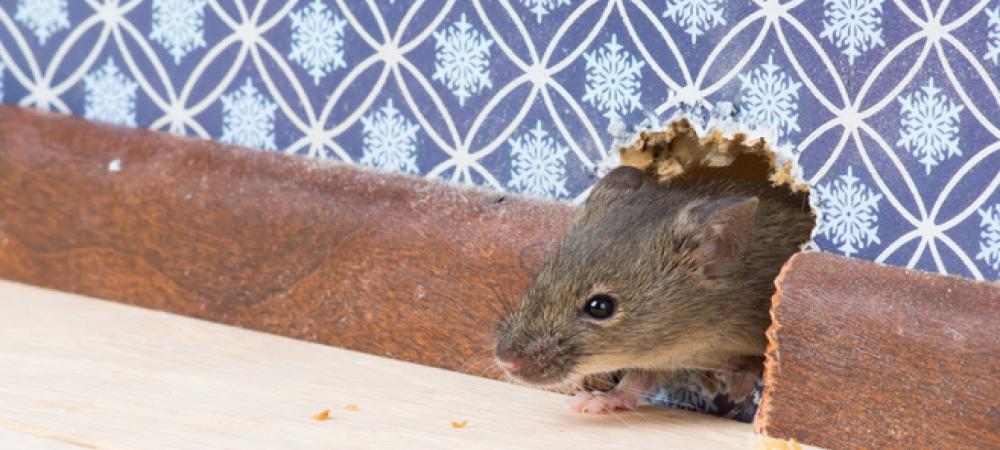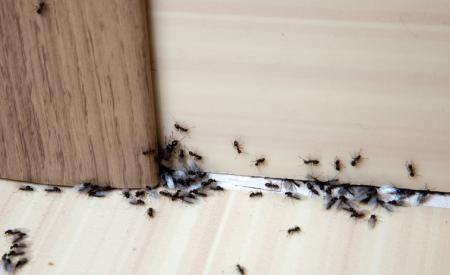5 Hidden Pest Entry Points in Tulsa Homes—and How We Seal Them

Most pest problems don’t start with an infestation—they start with a way in. And while you may not notice them, pests are experts at finding even the tiniest openings in your home’s structure.
Whether it’s ants, spiders, roaches, or rodents, every pest problem begins with a single step indoors. That’s why the first defense against infestations isn’t a spray—it’s sealing up the places they sneak through.
At Dandi Guaranty, we specialize in identifying and sealing the hidden gaps pests love to use. In this blog, we’ll uncover the 5 most common pest entry points in Tulsa homes and explain why a professional inspection and sealing service makes all the difference.
Why Entry Points Matter More Than You Think
Sealing entry points is one of the most effective—and often overlooked—ways to prevent pest infestations before they start.
Here’s why it matters:
- Prevention over reaction: No entry means no pests, plain and simple.
- Saves money long term: Proper sealing reduces the need for frequent treatments or pest-related repairs.
- Improves energy efficiency: Many pest entry points also let in drafts, moisture, and even allergens.
If you’re only treating what you see and not closing off how pests are getting in, it’s like bailing water without plugging the leak.
1. Foundation Cracks

Small cracks in your home’s foundation are one of the most common ways pests enter, especially ants, beetles, and even termites. Over time, weather, soil shifting, and water damage can create tiny openings near the base of your house. These cracks often go unnoticed because they’re low to the ground or hidden behind landscaping.
DIY Tip: Look for cracks wider than a credit card near exterior walls, especially in corners or where the ground slopes.
How they're sealed: Technicians use professional-grade sealants, foam fillers, and in some cases, mortar or mesh barriers to close off the space while allowing for future structural shifts.
2. Plumbing and Utility Penetrations
Anywhere a pipe, wire, or cable enters your home, there’s often a gap left behind. Pests, especially cockroaches and rodents, love to travel through these tight, warm corridors. Common locations include behind sinks, toilets, HVAC units, and water heaters.
DIY Tip: Shine a flashlight under your sinks or around utility closets to look for light coming through gaps or signs of droppings.
How they're sealed: Professionals use copper mesh, expanding foam, or silicone-based sealants that hold up against temperature shifts and moisture, unlike hardware-store solutions that crack over time.
3. Soffits and Attic Vents
Birds, bats, squirrels, and even wasps can enter your attic through damaged soffits or vents without screens. Once inside, pests can nest, chew wires, or spread droppings and allergens throughout your home.
DIY Tip: Check for daylight visible around soffits or listen for scratching sounds from above, especially at night.
How they're sealed: Techs reinforce these areas with fine-mesh screening, pest-proof vent covers, and exclusion foam where needed, allowing for airflow without inviting in unwanted guests.
4. Crawl Space Openings
Crawl spaces are dark, damp, and rarely checked, which makes them the perfect hiding spot for pests like spiders, rodents, and even snakes. Broken vent screens, loose access doors, and open gaps are open invitations for critters.
DIY Tip: Inspect access doors for gaps and look for pest trails or droppings around crawl space vents.
How they're sealed: Professionals install tight-fitting access panels, secure vent covers, and use pest barriers around the perimeter. We also check for moisture issues that attract bugs and critters in the first place.
5. Damaged Door and Window Seals
Worn-out weather stripping, broken screens, and loose door sweeps are another easy path indoors for bugs like flies, ants, and spiders.
This is especially common in older Tulsa homes or after seasonal weather shifts warp the materials.
DIY Tip: Run your hand around the edge of closed windows or doors—if you feel air, pests can get in too.
How they're sealed: Worn seals get replaced with heavy-duty weather stripping, tight-fitting sweeps on exterior doors are installed, and torn screens are repaired or replaced.
Why DIY Pest Sealing Only Goes So Far
While some entry points are easy to spot and patch, many go untouched unless you know exactly where to look and what to do.
Here’s why homeowners turn to Dandi Guaranty's professional services:
- We know where to look. Our certified inspectors are trained to spot the tiny signs most people miss.
- We use commercial-grade materials. They’re long-lasting and pest-resistant.
- We integrate sealing into every visit. It’s part of our complete pest prevention approach—not a separate service.
In short, we don’t just spray and go. We seal up the source of the problem so it doesn’t come back. If you're looking for professional control against insects and rodents, get in touch with our exterminators in Tulsa!
